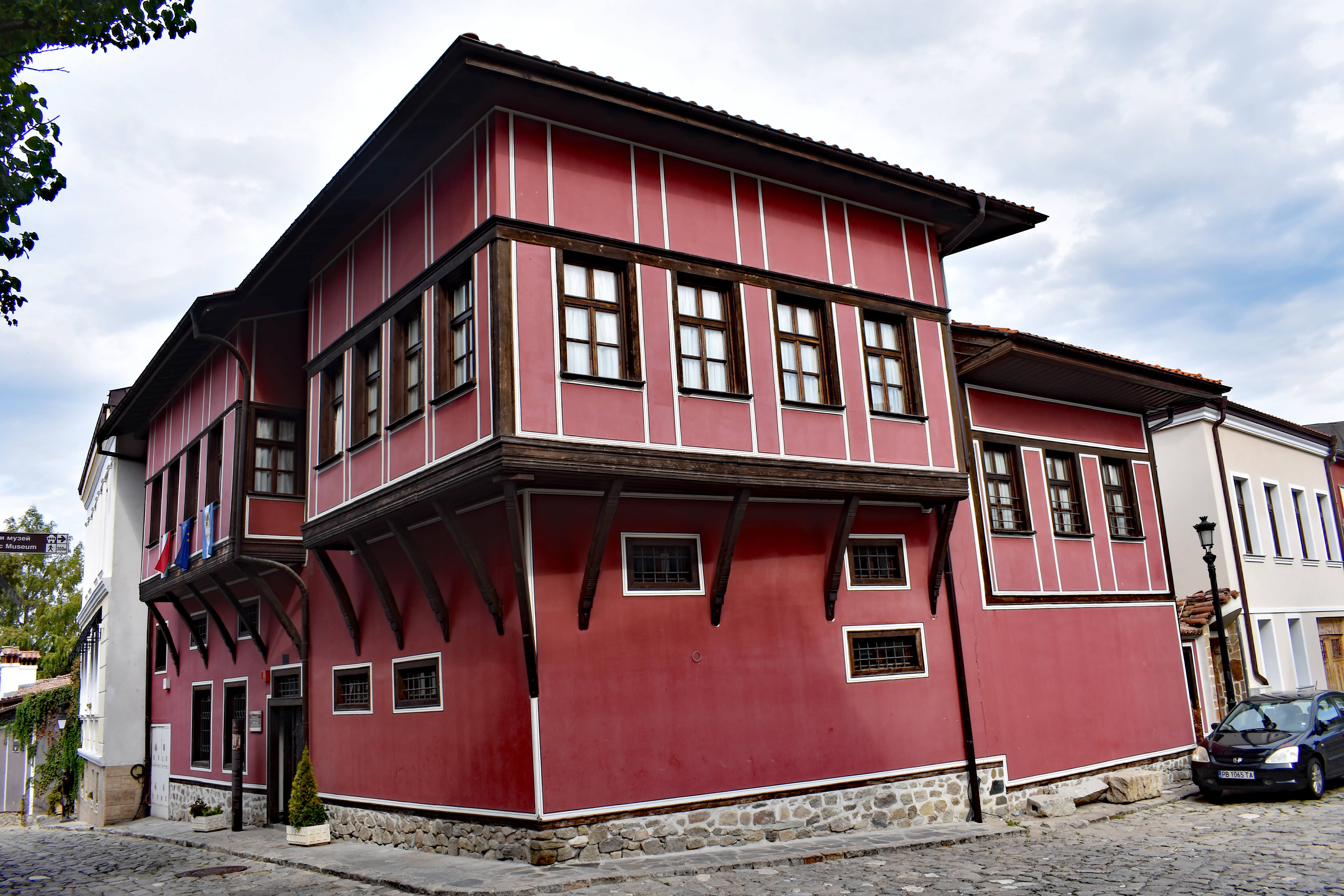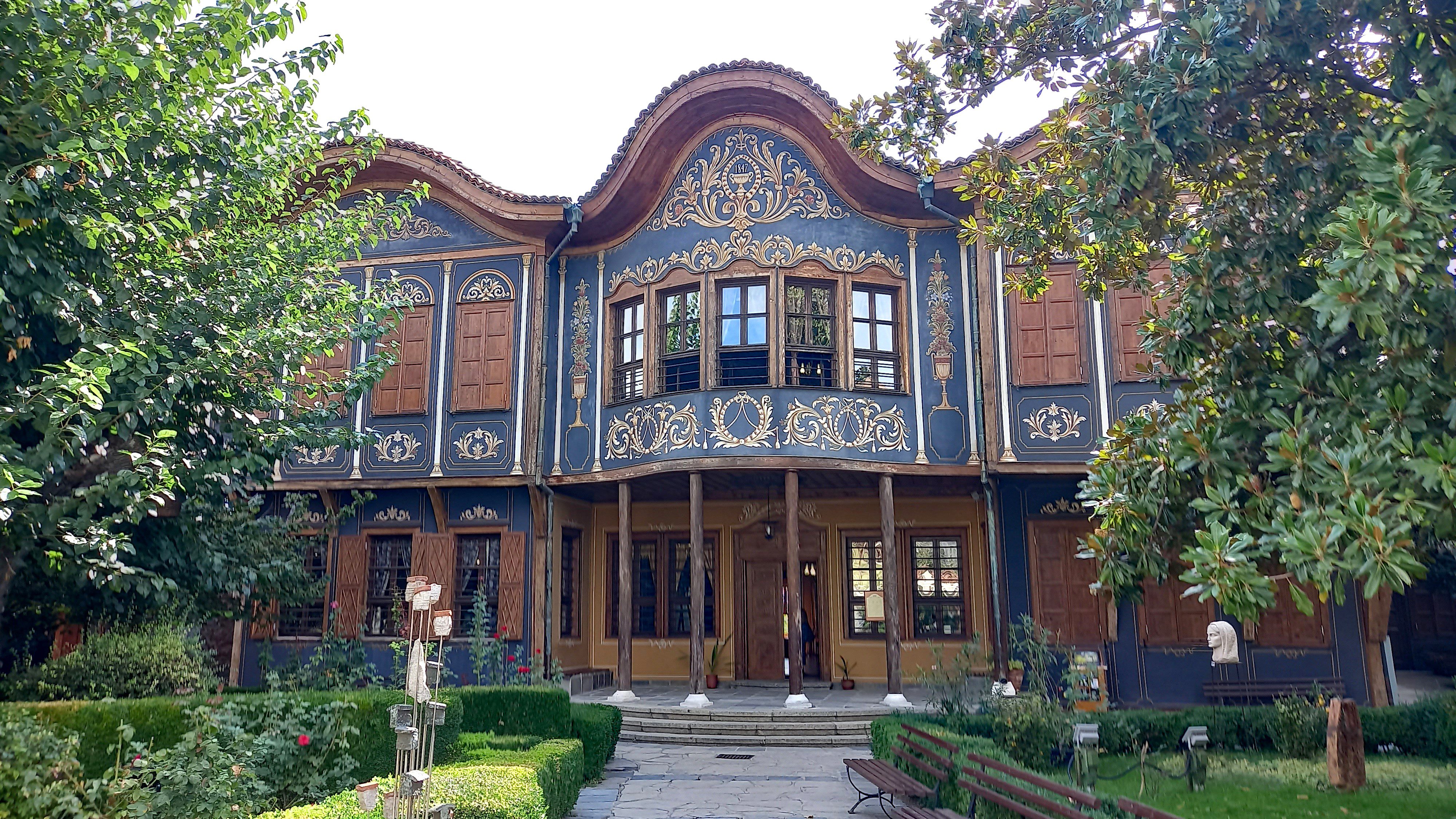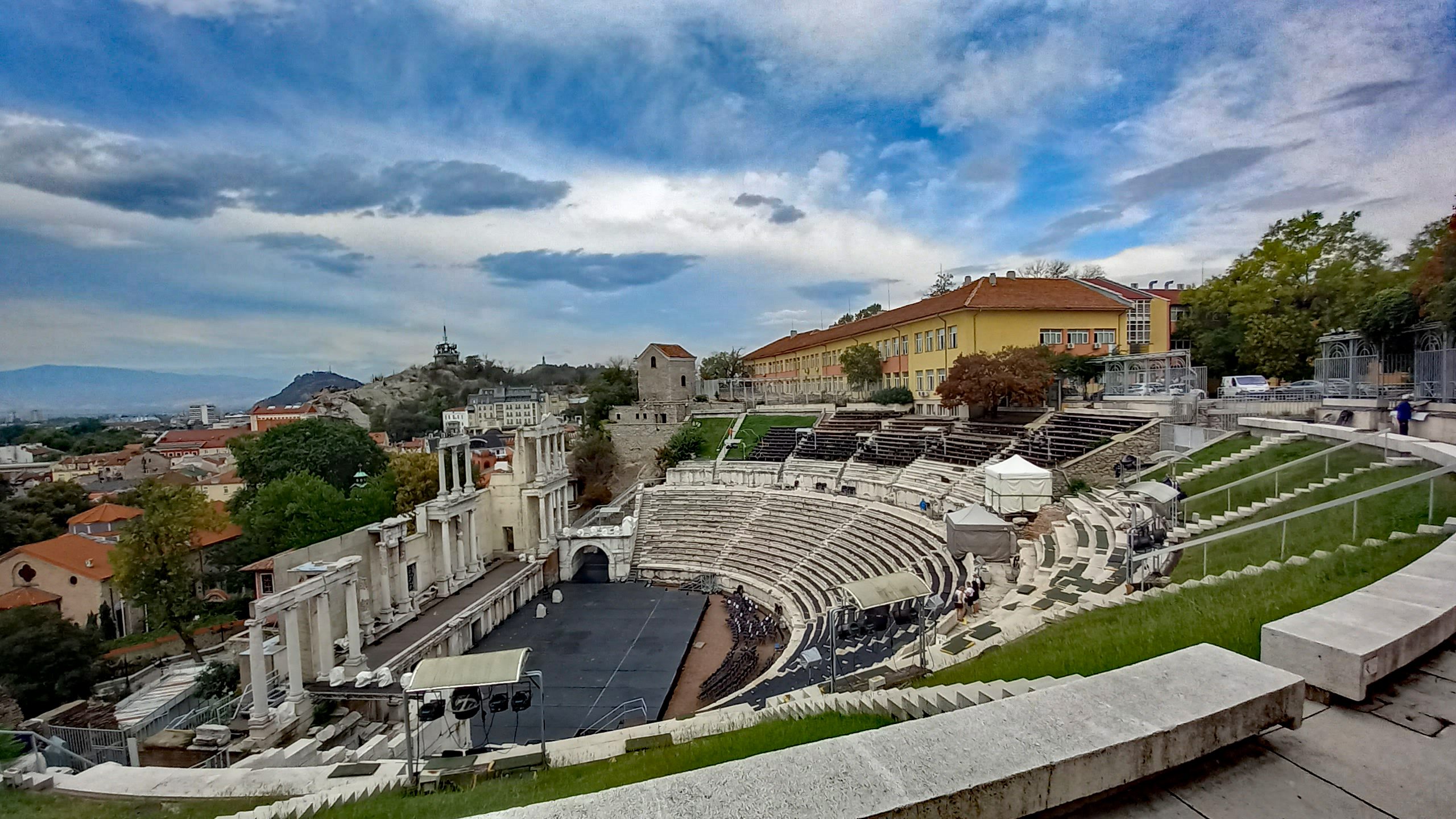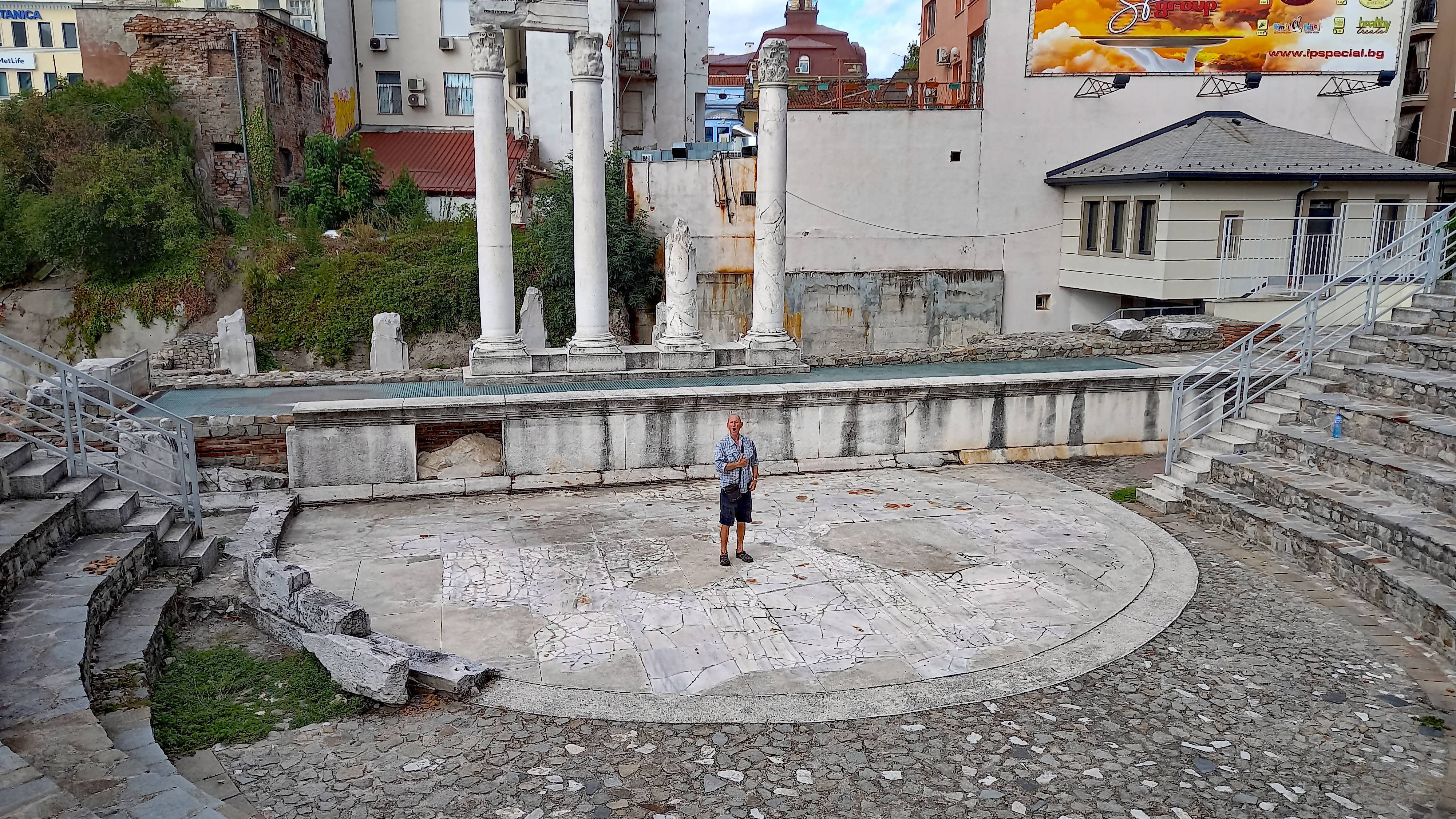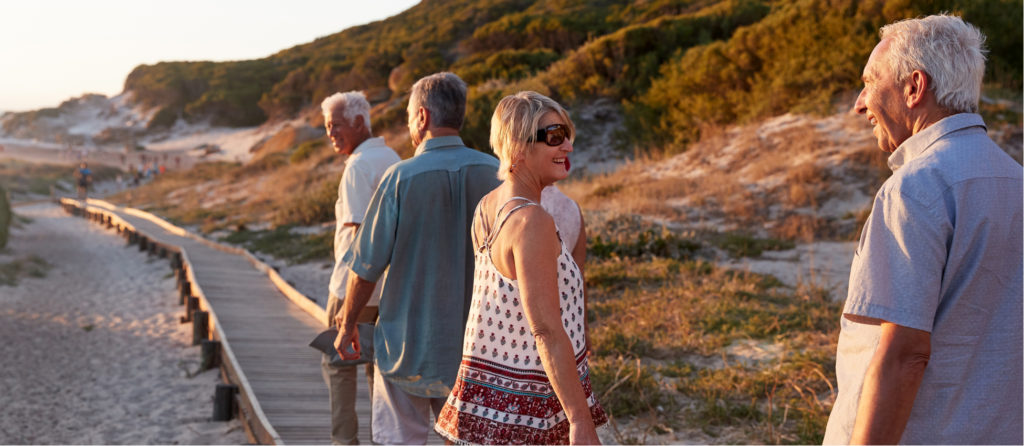Bulgaria’s second city, Plovdiv, was the European Capital of Culture in 2019.
It is divided into two main areas: the modern, more central part and the Old Town, each with a Tourist Information Office providing a helpful range of leaflets and maps. We found it easy to navigate with many streets named after famous people and events, and signs explaining their history in both Bulgarian and English.
The Old Town is built on three hills and to reach it, there are a significant number of steps, and once you’ve arrived, the streets are hilly and cobbled, so sturdy walking shoes and stamina are required. Whilst we tried to follow a route on the map, we kept diving off into interesting looking streets.
The city is famous for its Bulgarian Revival-style houses, and although combined tickets offered discounts, we decided to visit just one, but viewed others from the outside. We chose Klianti House as we’d read about its exceptional painted ceilings. Having paid 10 Lev each (£4.50), and donned blue plastic shoe coverings, a short video introduced us to the features of the three first-floor rooms. A low-ceilinged room, or hamila, was used to store the merchant’s wares and created much hilarity as we negotiated the low door, and we were pleased we were the only visitors. The other two rooms were ornately decorated, with one having a huge mural featuring Venice and Constantinople. The basement contained a small exhibition of modern art, in complete contrast to the 18th century fixtures and fittings.
We also visited the Ethnographic Museum, said to be Plovdiv’s most photographed site. The beautiful house had several rooms each dedicated to different local skills, the crops grown and traditional dress. As the sheep industry was particularly prominent, there was also a vast display of felt carpets, which were used to adorn walls.
Whilst you could pay to enter the Ancient Theatre of Phillipopolis with its capacity of 4,000 seats on eleven semi-circular tiers up the hillside, we peered through the railings for excellent views.
One area which disappointed was what was billed the Street of Crafts which was more about workshops and lessons rather than displays of the various crafts and products. It was also incredibly steep.
On our walk back into the modern part, we thought it would be pleasant to go through an area of green space on our map, but Sahat Tepe turned out to be a great big hill, so we skirted around it.
A more accessible park was near our hotel, Tsar Simeonova Gradina with colourful flower beds, large shade-giving trees, lots of statues, and benches for relaxing. In one of the two pools were ‘singing fountains’ which we visited one chilly night, but we found them not to be as spectacular as those we’d seen in Armenia the previous year.
One area hard to miss was the Roman Forum which our hotel overlooked, and which extended into other areas of the town, although sections of it were hidden under the roads.
In the northern section of the modern town was an area called Kapana, often referred to as The Trap, due to its maze of narrow cobbled streets. It is said to be the creative part of the city with lots of pedestrianised streets full of bars, cafes, galleries and street art. Maybe we visited slightly out of season or at the wrong time of day, but we were slightly disappointed, and thought it probably appealed to younger people at night. However, it was a relatively long walk from our hotel, and we decided not to venture to find out.
Depending on how many places you want to go into, there is plenty to see and with several museums and galleries it would be easy to amuse yourself for a week.
